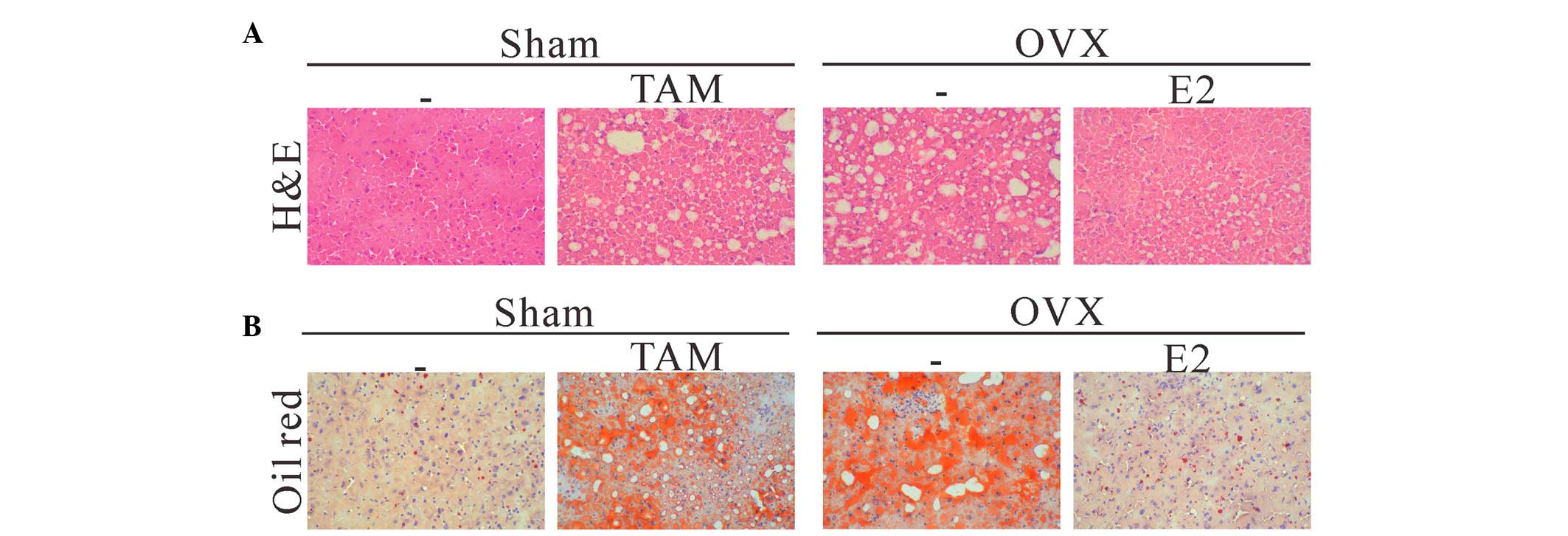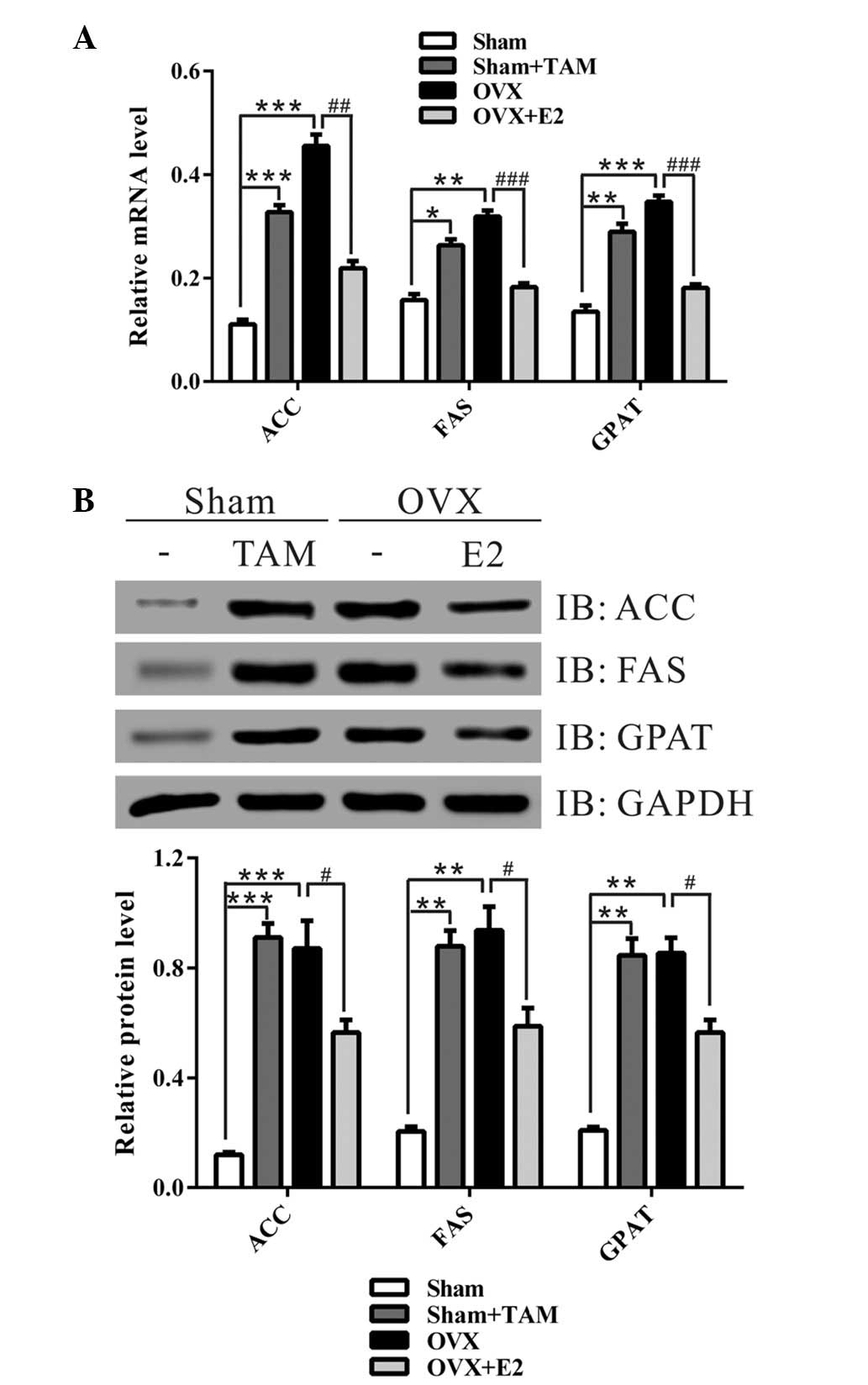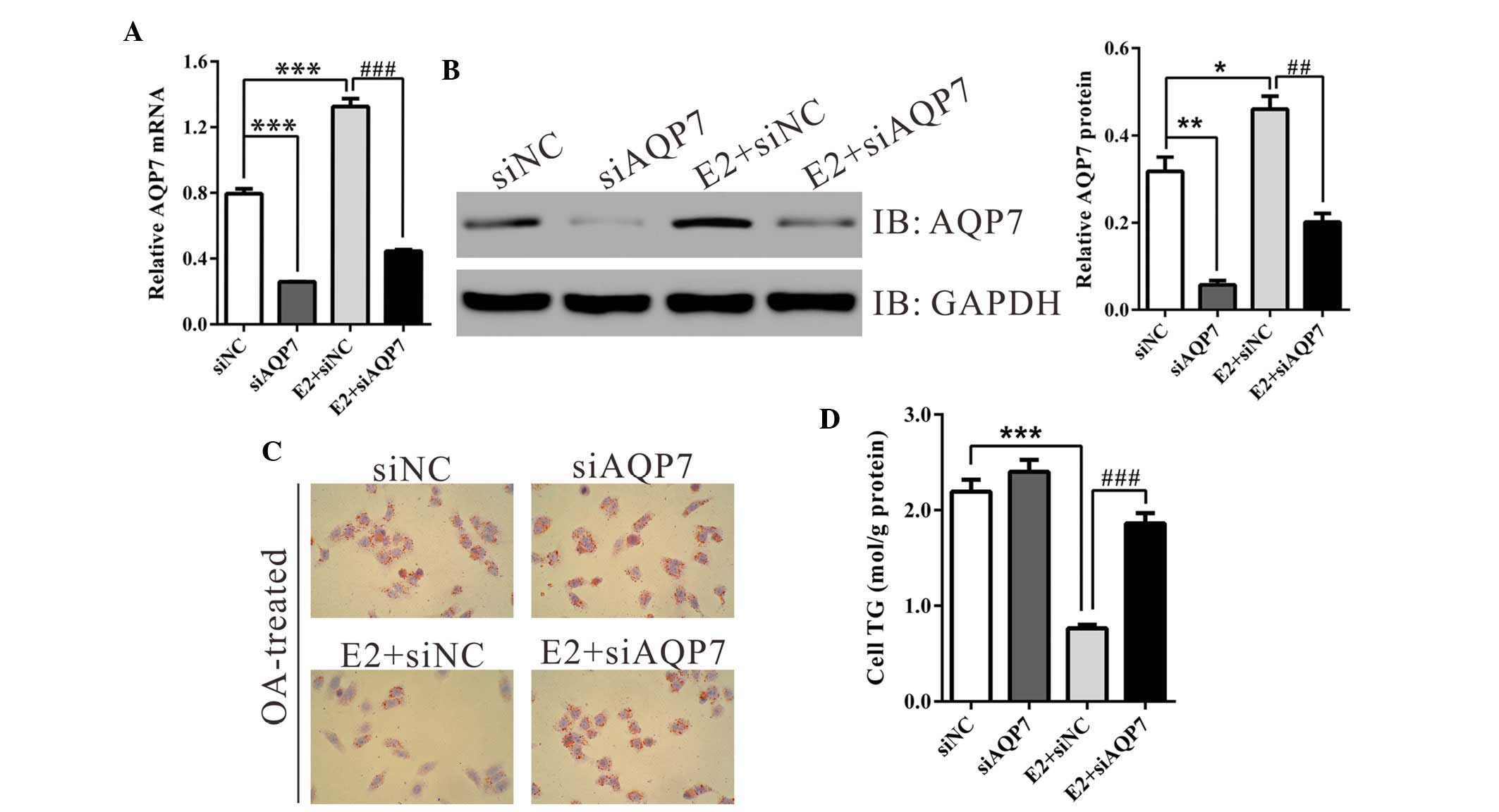|
1
|
Winkler UH: Menopause, hormone replacement
therapy and cardiovascular disease: A review of haemostaseological
findings. Fibrinolysis. 6:5–10. 1992. View Article : Google Scholar
|
|
2
|
Carr MC: The emergence of the metabolic
syndrome with menopause. J Clin Endocrinol Metab. 88:2404–2411.
2003. View Article : Google Scholar : PubMed/NCBI
|
|
3
|
Marchesini G, Brizi M, Bianchi G,
Tomassetti S, Bugianesi E, Lenzi M, McCullough AJ, Natale S,
Forlani G and Melchionda N: Nonalcoholic fatty liver disease: A
feature of the metabolic syndrome. Diabetes. 50:1844–1850. 2001.
View Article : Google Scholar : PubMed/NCBI
|
|
4
|
Suzuki A and Abdelmalek MF: Nonalcoholic
fatty liver disease in women. Womens Health (Lond Engl). 5:191–203.
2009. View Article : Google Scholar
|
|
5
|
Lonardo A, Carani C, Carulli N and Loria
P: 'Endocrine NAFLD' a hormonocentric perspective of nonalcoholic
fatty liver disease pathogenesis. J Hepatol. 44:1196–1207. 2006.
View Article : Google Scholar : PubMed/NCBI
|
|
6
|
Zhu L, Brown WC, Cai Q, Krust A, Chambon
P, McGuinness OP and Stafford JM: Estrogen treatment after
ovariectomy protects against fatty liver and may improve
pathway-selective insulin resistance. Diabetes. 62:424–434. 2013.
View Article : Google Scholar :
|
|
7
|
Farrell GC and Larter CZ: Nonalcoholic
fatty liver disease: From steatosis to cirrhosis. Hepatology. 43(2
Suppl 1): S99–S112. 2006. View Article : Google Scholar : PubMed/NCBI
|
|
8
|
Frühbeck G, Catalán V, Gómez-Ambrosi J and
Rodríguez A: Aquaporin-7 and glycerol permeability as novel obesity
drug-target pathways. Trends Pharmacol Sci. 27:345–347. 2006.
View Article : Google Scholar : PubMed/NCBI
|
|
9
|
Rodríguez A, Catálan V, Gómez-Ambrosi J
and Frühbeck G: Role of aquaporin-7 in the pathophysiological
control of fat accumulation in mice. FEBS Lett. 580:4771–4776.
2006. View Article : Google Scholar : PubMed/NCBI
|
|
10
|
Zou LB, Zhang RJ, Tan YJ, Ding GL, Shi S,
Zhang D, He RH, Liu AX, Wang TT, Leung PC, et al: Identification of
estrogen response element in the aquaporin-2 gene that mediates
estrogen-induced cell migration and invasion in human endometrial
carcinoma. J Clin Endocrinol Metab. 96:E1399–E1408. 2011.
View Article : Google Scholar : PubMed/NCBI
|
|
11
|
Institute of Laboratory Animal Resources
(US) Committee on Care, Use of Laboratory Animals, and National
Institutes of Health (US): Division of Research Resources: Guide
for the care and use of laboratory animals. 8th edition. National
Academies Press; Washington, DC: 2011
|
|
12
|
Yuan H, Zhang H, Wu X, Zhang Z, Du D, Zhou
W, Zhou S, Brakebusch C and Chen Z: Hepatocyte-specific deletion of
Cdc42 results in delayed liver regeneration after partial
hepatectomy in mice. Hepatology. 49:240–249. 2009. View Article : Google Scholar
|
|
13
|
Livak KJ and Schmittgen TD: Analysis of
relative gene expression data using real-time quantitative PCR and
the 2(-Delta Delta C(T)) Method. Methods. 25:402–408. 2001.
View Article : Google Scholar
|
|
14
|
Ricchi M, Odoardi MR, Carulli L, Anzivino
C, Ballestri S, Pinetti A, Fantoni LI, Marra F, Bertolotti M, Banni
S, et al: Differential effect of oleic and palmitic acid on lipid
accumulation and apoptosis in cultured hepatocytes. J Gastroenterol
Hepatol. 24:830–840. 2009. View Article : Google Scholar : PubMed/NCBI
|
|
15
|
Mori-Okamoto J, Otawara-Hamamoto Y, Yamato
H and Yoshimura H: Pomegranate extract improves a depressive state
and bone properties in menopausal syndrome model ovariectomized
mice. J Ethnopharmacol. 92:93–101. 2004. View Article : Google Scholar : PubMed/NCBI
|
|
16
|
Bekku N and Yoshimura H: Animal model of
menopausal depressive-like state in female mice: Prolongation of
immobility time in the forced swimming test following ovariectomy.
Psychopharmacology (Berl). 183:300–307. 2005. View Article : Google Scholar
|
|
17
|
Shou J, Massarweh S, Osborne CK, Wakeling
AE, Ali S, Weiss H and Schiff R: Mechanisms of tamoxifen
resistance: Increased estrogen receptor-HER2/neu cross-talk in
ER/HER2-positive breast cancer. J Natl Cancer Inst. 96:926–935.
2004. View Article : Google Scholar : PubMed/NCBI
|
|
18
|
Okamoto Y, Tanaka S and Haga Y: Enhanced
GLUT2 gene expression in an oleic acid-induced in vitro fatty liver
model. Hepatol Res. 23:138–144. 2002. View Article : Google Scholar : PubMed/NCBI
|
|
19
|
Pacifici R: Estrogen, cytokines, and
pathogenesis of postmenopausal osteoporosis. J Bone Miner Res.
11:1043–1051. 1996. View Article : Google Scholar : PubMed/NCBI
|
|
20
|
Gloy V, Langhans W, Hillebrand JJ, Geary N
and Asarian L: Ovariectomy and overeating palatable, energy-dense
food increase subcutaneous adipose tissue more than intra-abdominal
adipose tissue in rats. Biol Sex Differ. 2:62011. View Article : Google Scholar : PubMed/NCBI
|
|
21
|
Chung YH, Huang CC, Chiu SC, Lin YH and
Yen TC: Evaluate non-alcoholic fatty liver disease in
ovariectomized mice as a model of postmenopausal women using Tc-99m
Disofenin scintigraphy and ultrasound imaging. J Nucl Med. 55(Suppl
1): p352014.
|
|
22
|
Lundholm L, Zang H, Hirschberg AL,
Gustafsson JA, Arner P and Dahlman-Wright K: Key lipogenic gene
expression can be decreased by estrogen in human adipose tissue.
Fertil Steril. 90:44–48. 2008. View Article : Google Scholar : PubMed/NCBI
|
|
23
|
Paquette A, Wang D, Jankowski M, Gutkowska
J and Lavoie JM: Effects of ovariectomy on PPAR alpha, SREBP-1c,
and SCD-1 gene expression in the rat liver. Menopause.
15:1169–1175. 2008. View Article : Google Scholar : PubMed/NCBI
|
|
24
|
Carroll JS and Brown M: Estrogen receptor
target gene: An evolving concept. Mol Endocrinol. 20:1707–1714.
2006. View Article : Google Scholar : PubMed/NCBI
|
|
25
|
Kobayashi M, Takahashi E, Miyagawa S,
Watanabe H and Iguchi T: Chromatin immunoprecipitation-mediated
target identification proved aquaporin 5 is regulated directly by
estrogen in the uterus. Genes Cells. 11:1133–1143. 2006. View Article : Google Scholar : PubMed/NCBI
|



















